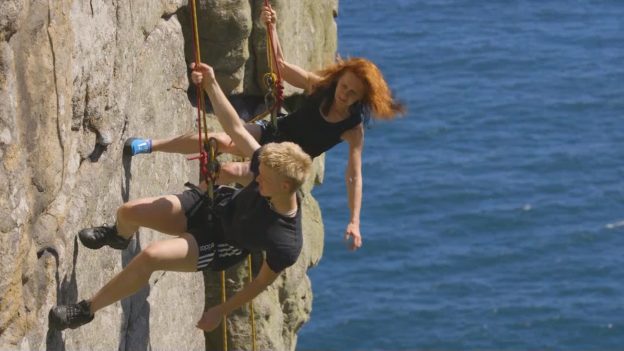When your world spins, and seismic shifts occur that mean that nothing is ever going to be the same again, what do you do? Make a show about it! This is the story of the new Scarabeus Aerial Theatre project, Emerging.
‘I felt that suddenly my life had gone completely upside down – and not the upside down I know as an aerialist – upside down in a very different way.’
Daniela Essart is talking to me just before Trans Parent Day, which falls on the first Sunday of November – a day that originally marked and celebrated the large number of people who are both trans and parents, but which in recent years has also included the parents of trans gender young people. Daniela and her partner in life and work, Søren Nielsen, fall into that second category.
The couple are co-directors of Scarabeus Aerial Theatre: Daniela is artistic director and creator-director of the company’s shows; Søren Nielsen is executive and technical director.
In April 2019, their world – as Daniela puts it – turned upside down in a new and unfamiliar way when the person that they considered to be their daughter, Naissa, came out publicly as trans-male.
Now, Daniela and Naissa are co-creating a new show, Emerging. It is a show about transitioning and transformation; about art as a healing mechanism; about knowledge, advocacy, and alliance with the genderqueer and trans community.
Emerging will have a separate but linked documentary film touring with it. Show and film are in progress now, and will premiere at The Lowry in Salford in autumn 2022. Naissa has worked with his parents’ company before, but this is the first Scarabeus project for which Daniela and Naissa will carry an equal artistic responsibility for the content of the work – and there are sound and specific reasons for this: the show aims for complete honesty about the upheavals in their lives, to explore the topic in innovative ways, and to present Naissa’s and Daniela’s points of view with equal balance.
The story of how this project has come about is an extraordinary one, weaving together life and art in a complex and challenging way.
So let’s start at the beginning…
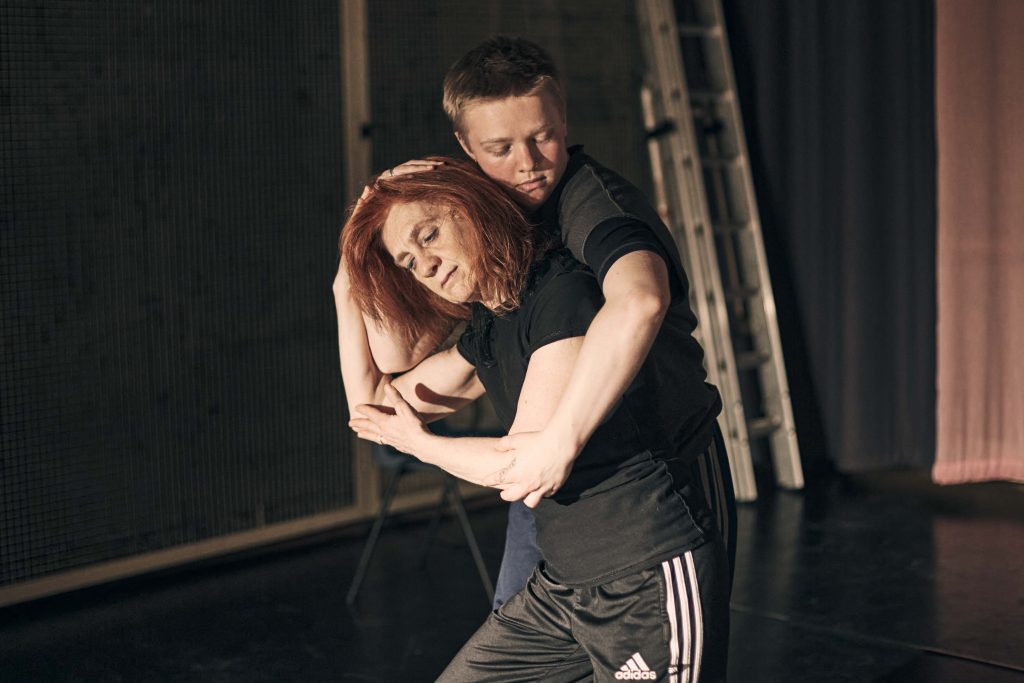
‘Will you take me by the hand and guide me through the appearing and disappearing of you, because this is what I fear the most; to lose you, my child.’ – Daniela
‘It is painful. It is beautiful. It is important.’ – Naissa
‘We realised we were navigating an extremely complex journey,’ says Daniela, who had thought that ‘things had somehow been resolved’. By which she means that Naissa, who had always been a ‘tomboy’ (to use the common vernacular) as a child, had gone on to consider themselves to be non-binary as a teenager. And Daniela had thought that the old worries about feminine identity were somehow resolved in this decision to present as an androgynous person. But this wasn’t the case. Naissa was, at that time, in the middle of a dance foundation year at the Northern Contemporary School of Dance (now studying for a degree at the London Contemporary Dance school), but that most crucial of necessities for a dancer – to be at ease in one’s own body – was missing. A simple ‘how are you?’ question that Daniela put to Naissa whilst driving back from a Scarabeus project they were both working on became a dropped bombshell. Not OK. Not well at all. Not happy inside the body of a woman. Not able to relate to the image in the mirror…
Naissa subsequently took the decision to come out publicly as trans, to start taking hormones, and to have ‘top surgery’. Decisions Daniela found very hard to deal with.
‘I really could not understand why my child – who was brought up free to wear whatever she wanted and always looked androgynous in any case – why Naissa could not see that she-or-he could absolutely pass and didn’t need to do this further, invasive, and irreversible treatment at such a young age. This is someone who was brought up without drugs and medicines and other interventions to the body. I tried to negotiate a postponement. Everything seemed to happen so quickly. You are trying to buy time, to delay… Any argument I tried to put forward, I just encountered the determination that these things needed changing.’
From Naissa’s perspective, his decision was clear-cut and unavoidable, not open to negotiation.
‘For me, my transition isn’t about how I’m seen by other people,’ he says when we speak on Zoom a week or so after I meet with Daniela, ‘it’s to feel comfortable in my skin. My transition doesn’t feel anything to do with gender – it is about being in a body I want to live in – becoming myself, not becoming a man.’
So there we have it: two very different points of view. Two people – a parent and their adult child – who love each other, but find it difficult to work things out. What to do?
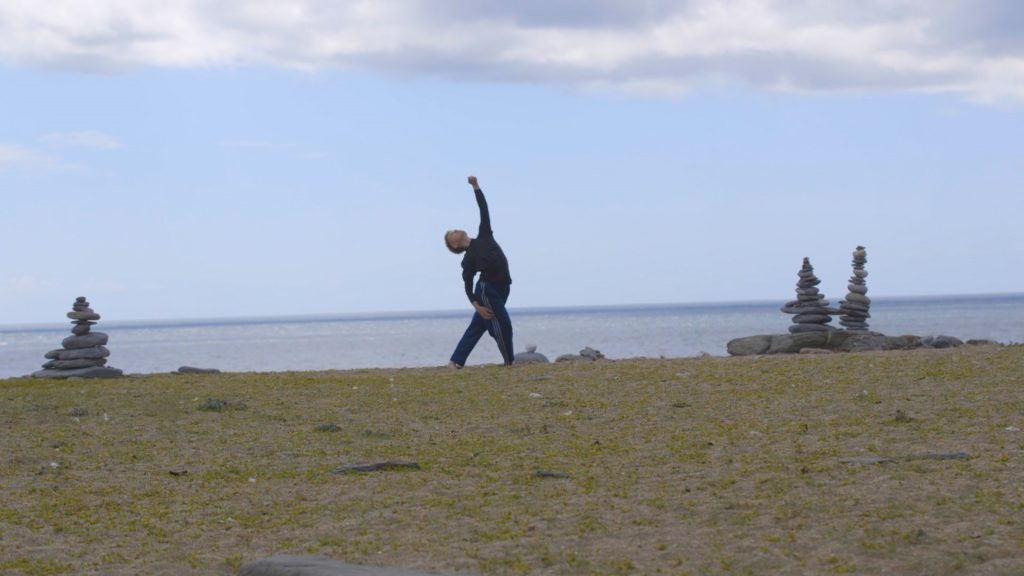
‘Our transitions together have been for different lengths, different paces. I feel ready for this, and I never want to hurt you. I love you so dearly, and I want you on my journey with me, where we can work together.’ – Naissa
‘What do I know about what it means to live in a body that doesn’t feel like home? Me, who has a body that has served me well all of my life! I have travelled through many internal and external landscapes, but this is completely new and unexplored for me; it feels mysterious and elliptical, shape-shifting and somehow dangerous.’ – Daniela
A good friend suggested that the two write to each other. As Daniela puts it ‘Everything is so emotional. It’s very difficult to listen without suggesting or answering back. Listening, really listening, is an incredible skill.Writing letters gives you the time to distil what you want to say to the other person. You say it in a less triggering, less reactive, way.’
So the person writing the letter can take the time to think about it, and the other person can take the time to read it and re-read and accept – or, at least, acknowledge – a differing point of view…
And Naissa says, ‘When I came out I was living in Leeds – then I came home for three months before starting my degree – it was difficult to be around something that was so hard for my mum, and whenever I saw her it would be quite painful and emotional. With letters, you can say what you want to say uninterrupted – similar to when you hold space for people so they can say what they want to say, and the other person can’t influence how you say something…’
And whilst Daniela and film-maker Sky Neal – a long-time Scarabeus collaborator – were talking about this letter-writing process, Sky, a mother herself, and someone who knows both Daniela and Naissa well – suggested they make a short documentary film that would give justice to both stories.
‘I realised,’ says Daniela, ‘that if you do any kind of search on the internet you’ll find tons of material about different perspectives on gender, you’ll find a lot of Ted talks, or websites that talk about trans gender from the point of view of trans gender people and you may find a little bit about how as a parent you can support your trans child – what you don’t find is a place where there is an equal representation and a dialogue about how this journey makes you completely reconsider everything – your values, what you believe in life. There is neither an artistic representation nor an accurate documentary representation. And as a mother, I felt that my voice was completely unheard.’
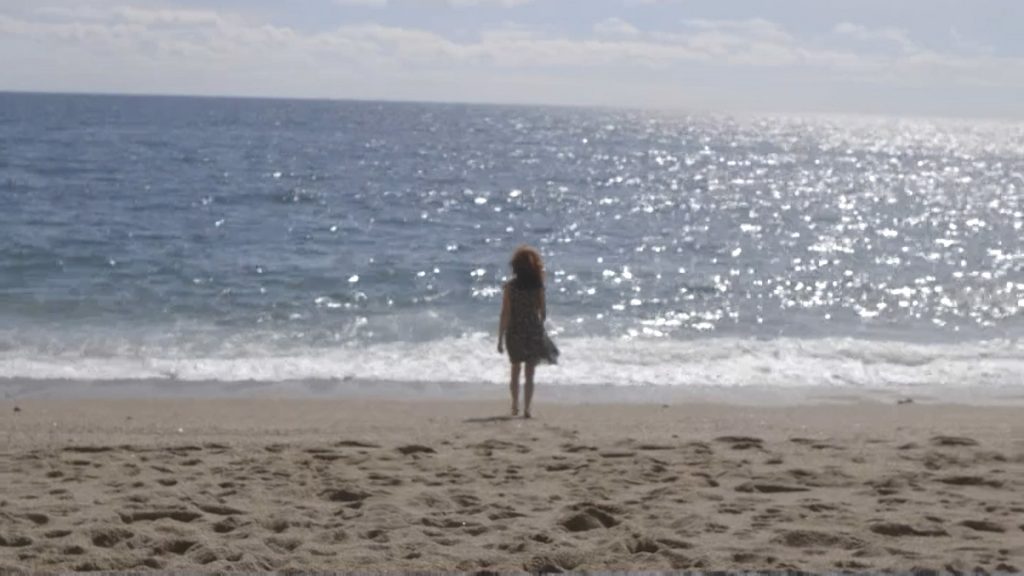
And so, for Daniela, the idea began to grow that this could be not only a documentary film but also a show – made and performed by Daniela and Naissa, working in collaboration with other artists, the pair using their very able skills as circus-theatre and dance artists to explore this volatile dynamic of growth, change and acceptance. Because, if you’re an artist, Daniela feels, why wouldn’t you use your art to explore one of the most complex things that had occurred in your life?
But what did Naissa think when that idea was first mooted?
‘I was very resistant at first,’ he says, ‘mostly because at this time our relationship was very – potent. Emotional, and sensitive. Charged. I wasn’t sure it’d work out, but we had a week’s work outdoors in the woods arranged with choreographer Becky…’
This being Becky Namgauds, a young choreographer who both Naissa and Daniela admire and were keen to work with. Sky was also involved in filming the footage that would later be used for the Emerging teaser
‘We started to work in Queens Woods in Highgate, near our home, during the 2020 lockdown,’ says Daniela. ‘Legally, we had to work outdoors because of the pandemic – so we saw it as a gift rather than a restriction. We decided to rig directly from trees. Naissa wanted to work with a bungee harness close to the floor and I wanted to work with an aerial cocoon. Becky also encouraged us to work on a floor-based contact dance duet’.
‘Becky is great,’ says Naissa, ‘Really good at helping pull out ideas without directing – facilitating the space and facilitating support and care – helping us creatively communicate…’ He also reflects on the vital role dance plays in his life, saying: ‘For me movement and dance are very much about communicating. I like dancing because it makes me feel I can communicate something I can’t verbalise, and hopefully people will feel that without the need to label it.’
From there, as things eased up in summer 2020, they went to Cornwall to work at greater length with Sky, who is based there.
‘We wanted to work with the metaphor of the elements,’ says Daniela. ‘We used the rocks and the water. I wrote a piece of text called Elemental. I felt very much that Naissa was a water creature – changing, morphing – and that I was a rock, but one that was crumbling…’
Naissa remembers it as a difficult but rewarding experience: ‘Sky filmed each of us reading from our letters, plus some movement on the beach. Daniela did some aerial work in the forest – and then there was the abseiling on the cliffs – a really beautiful moment.’
Ah yes, indeed a beautiful moment! One that will be incorporated into the show as film footage (because transporting a cliff-face round the country would pose a fair few difficulties!). I tell Naissa that Daniela and I have had an interesting conversation about how different people view this image, particularly in relation to the text that appears with it: ‘Travel slowly and safely.’ I see it as two people in a situation where risk has been carefully calculated, and safety precautions have been responsibly thought through. Other people see it as a moment of great danger – a point of no return, almost.
‘The only thing I could think about was that we were really on the edge,’ says Naissa, ‘and – this isn’t morbid at all, but there was something very freeing about the thought that if I were to fall, it’d be OK!’
Musing on the time spent in Queens Wood and Cornwall, Naissa says: ‘It was hard, but the more we did it the less hard it became, and I realised that the reason, probably, why it was so hard for me was because there were loads of things I didn’t feel able to communicate…’
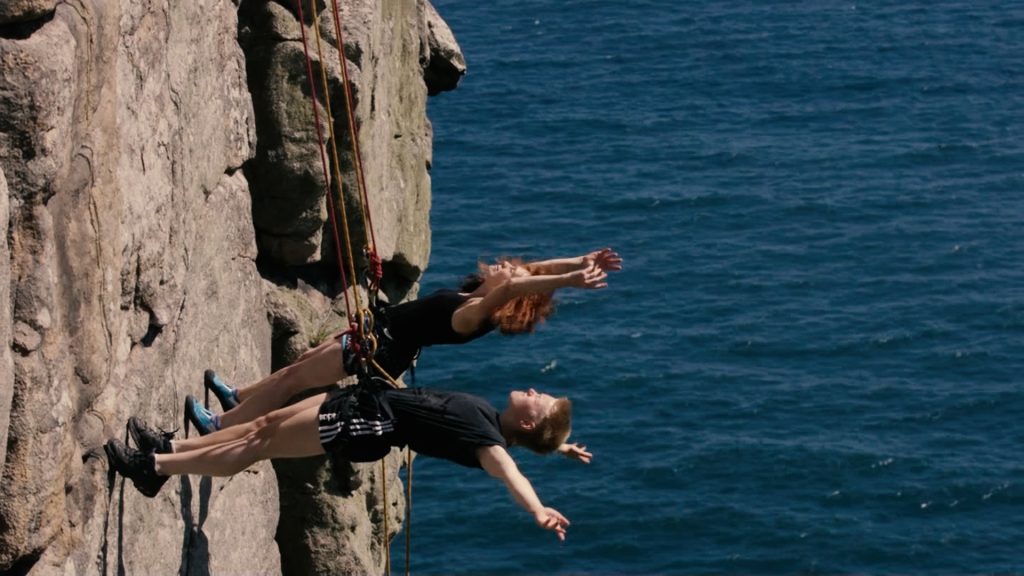
‘You my perfect child, who grew inside me, whilst I felt every movement, kick and turn of you. You who I love more than anyone else in the entire world. I look at you, exquisite human being, with the most beautiful face, the loveliest and most attractive of bodies, which enables you to do what you most love in the world – dance, move… Why should you need to change it, tamper with it?’ – Daniela
‘My whole life has not worked up to this, this is not my final completing goal in life. This is a necessary step that I need to continue on my journey to have some grounding in my life. I am still Naissa as you have always known me, you are still Mamma to me. I just have to take these steps towards the changes in my body that will make me feel at home.’ – Naissa
After some months of reflection, the project moved on with another research and development period in April 2021 – this time indoors at the National Centre for Circus Arts (NCCA) in Hoxton, with the support of a modest Arts Council England grant.
There was just a week booked in the NCCA creation studio, but before that came a lot of preparation – Daniela as director of the project liaising with Naissa, choreographer Becky and numerous other collaborators, including Scarabeus co-director Søren and rigger Graeme Clint, video designer Nina Dunn, and stage manager/photographer Henri T. Filmmaker Sky also came in for two half-days.
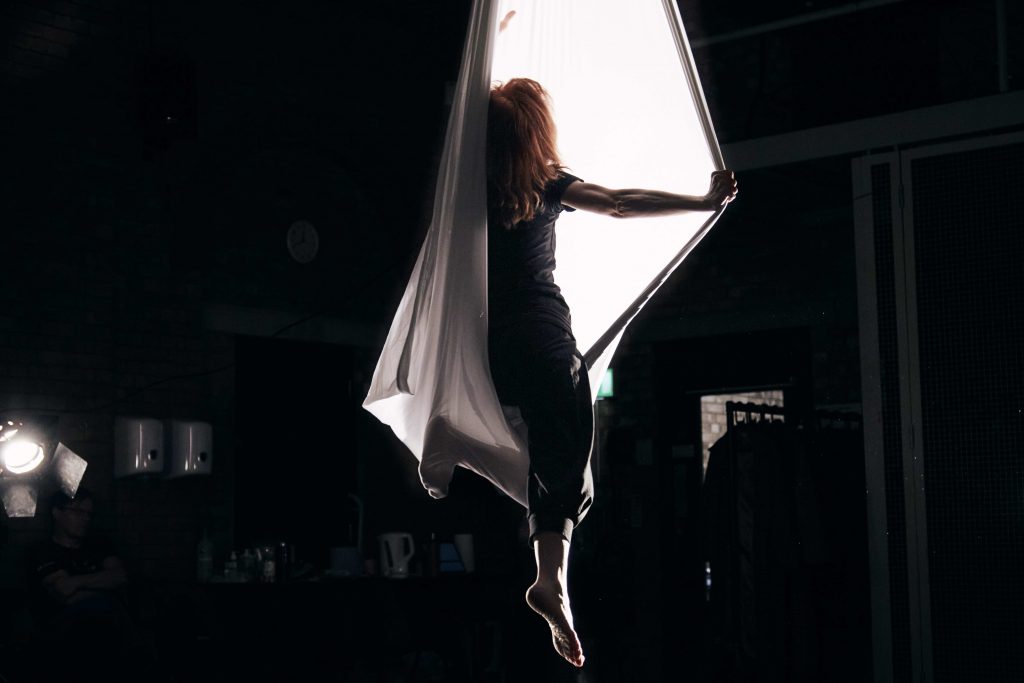
‘We really looked at this one specific scene using the cocoon, with a text I wrote about giving birth to Naissa,’ says Daniela. This text had been enclosed with Daniela’s first letter to Naissa. There was also work on the bungee harness by Naissa, exploring broken dialogue, and the dynamic of love versus frustration. When I talk to Naissa, I muse on the image of the bungee as an umbilical cord – although it’s not something he particularly feels himself about the apparatus: ‘It never occurred to me, but I suppose that is how it could be seen, visually. I’m really interested in the bungee – I feel most in my element. It feels safe in the way that I know exactly how I’m expressing myself, how I’m moving. I feel in control, and in communication.’
Another key piece of equipment is a big suspended net, modified in various ways by video artist Nina, who projected abstract textures and concrete images of sea water, the sky, and sunflowers onto the white net and the two performers.
‘I think I was very worried that the net – which was Daniela’s idea – would be received as a typical image of entrapment and all of that kind of stuff,’ says Naissa, ‘But with the lights off, and projections on it, it looked like a surface not a net. Every step you take affects the other person – so it became a metaphor for relationships and communication, where if you take a big leap it’s going to throw the other person off, but if you tread carefully together you can go on the journey.’
Daniela sees it as ‘the web of life, a metaphor for how, in a relationship, you continuously affect each other. There is a ripple effect – you are continuously connected’. She tells me that she was inspired by the visual artist and sculptor Chiharu Shiota, who weaves enormous web-like installations that people can walk through; and her vision for the new show is for it to be an immersive piece, with audience placed around and underneath. She is working with rigger and maker Joe White on the creation of a web that can be rigged and toured relatively easily.
The two performers also explored the use of two suspended Cyr wheels, strung with webbing so that they looked like giant dreamcatchers – Scarabeus will also be commissioning the making of two large hoops for the show’s tour.
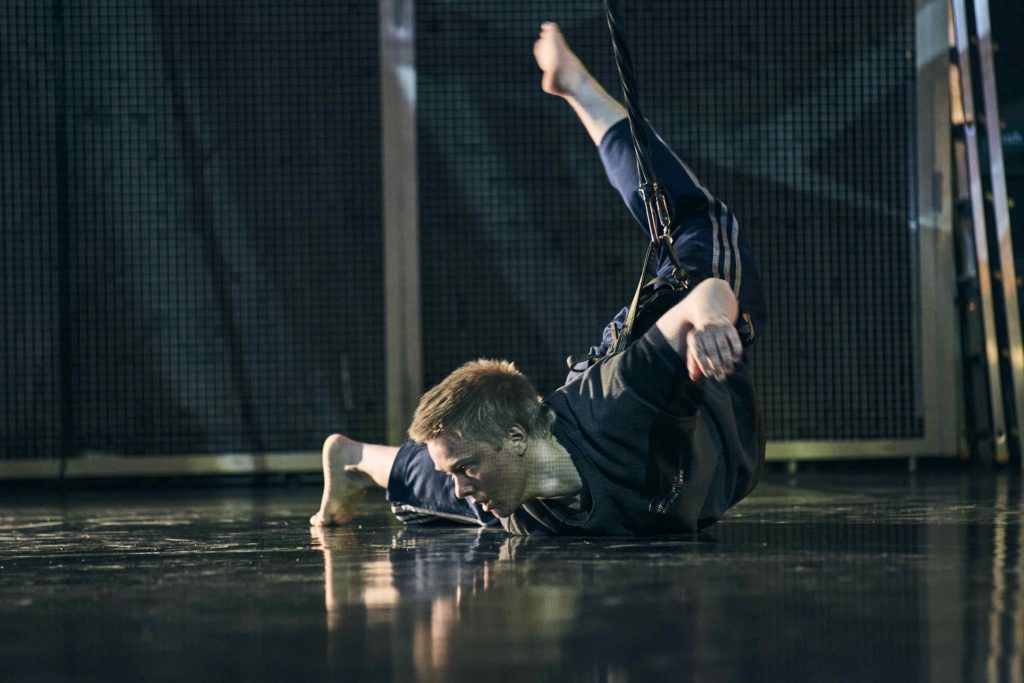
So, the first stage of research and development is done, a premiere booked for autumn 2022, and the film-making is in progress. What happens next?
Daniela is keen to emphasise that the documentary film being made by Sky, and the live performance work, are being viewed as separate enterprises, each sourcing funding independently. The documentary will be around 15–20 minutes long, and could potentially be shown in the same venue as the show during the tour. But it will also have its own independent life.
The next stage of the creative process for Daniela is to work on scripting the piece. There are plans for her to work with a dramaturg on the creation of the show’s script – ideally someone from within the LGBTQ+ community who has experience with multi-discipline art-making that incorporates the use of text. As writer-director, Daniela is already musing on the staging and the relationship with audience: ‘I have some specific ideas about how I want it to start. The audience will come into an installation – a space created in a certain way.’
Because the physical dance and circus-theatre work in the show will be intense, Daniela feels that the text will almost certainly be pre-recorded and incorporated within the soundscape, which is going to be created by composer/musician Domenico Angarano, who is a music lecturer at London Contemporary Dance, and thus somebody that Naissa knows and has worked with. The score will be completed by summer 2022 so that it is ready (or as near as possible) for when the company return to the rehearsal studio. Daniela has a meeting planned with Nina Dunn to talk about the use of multiple projections in the space, and the two will work together on the creation of films and projections that use historic family photos and video. Discussions are in progress (led by Søren) about the rigging issues and the construction of the bespoke circus equipment. Then, there will be discussions with Becky on how to negotiate the next phase of physical performance work. ‘So far we haven’t touched the things that are the most difficult and painful,’ says Daniela, ‘things which you can’t skive away from if you are making a piece that wants to make people understand the navigation of a complex journey’.
Naissa, though, feels that it is getting easier, and especially values the contact dance work initiated by Becky: ‘At the beginning of my coming out, we were both very resistant to each other and so I think the contact work can be seen as a way to trying to approach things with love – for my mum, there was resistance because she was worried about my health and safety, and I really didn’t see it that way until recently… So it became about trying to approach things with tenderness and love even if we disagree.’
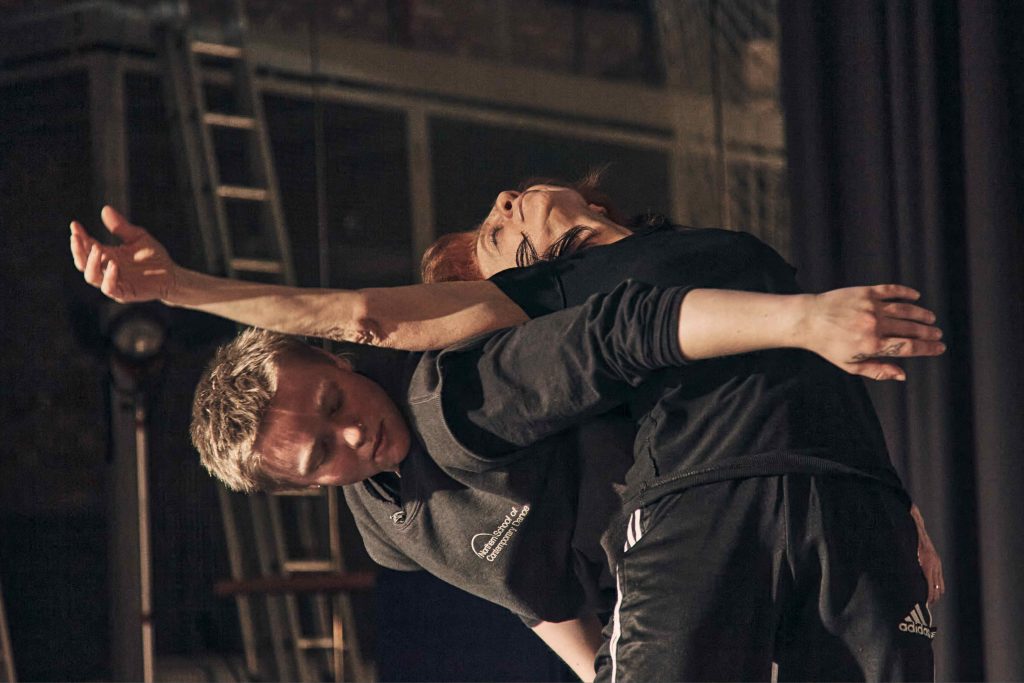
As things stand, Naissa and Daniela are both going to perform in the show. Both talk to me about the need for physical and emotional safeguarding in the rehearsal/performance space – which they feel they have managed to achieve so far, with the support of the team. For Naissa, the fact that he was undergoing such drastic physical changes, on top of the emotional and psychological shifts that they were both making – added to the pressure. But he feels he was supported all along the way. ‘With each stage of work I was further along the road with adjusting to the hormones. The more it was settling in, the more I felt I was inhabiting my own skin not someone else’s. There are changes in the way I move, and how I am in the space. And everything has drastically changed since I’ve had chest surgery. Last time we worked together I was four months on hormones, and Becky noticed that my energy was very different, and I was much more happy. It is nice that other people can feel it too!’
Naissa now has the final year of his degree to get through before re-engaging with the making of Emerging – so is grateful for a bit of a gap before the next creation period. There is also another reason why these relatively large gaps between the practical work sessions are a blessing: ‘It’s nice to have such big chunks of time in between because, personally, it feels very heavy – even though it is a positive thing, it is emotional to go back in there, so it works for me that it is quite spaced out. Each time I go back in I have more perspective and more understanding and empathy for myself and for my mum.’
For Daniela, the process feels fresh and good as, for the most part, she is collaborating with people who are outside of the usual Scarabeus circle of artists – often people who are nearer to Naissa’s age than to hers, and in some cases, people from the LGBTQ+ community, which feels right.
‘I have deliberately chosen people who don’t know me and Naissa personally – mostly people who I haven’t worked with before. I needed that tabula rasa – to work with people with no pre-conceptions of who I am and what I create.’
For both, communication and advocacy is the main reason for it all. As Naissa puts it:
‘I don’t want to do it for myself, more for people who can’t – especially if it helps to shift perspectives for people who don’t know trans people, who don’t have trans children. If the art could be some form of activism or create some sort of impact, that’s all that I would want. I don’t really know what it’ll do for me – but I hope it’ll help other people and create empathy and love.’
In one of his letters, Naissa lists a number of words, capitalised. It feels a sound note to end on, as a summary of the process of creating Emerging:
PATIENCE LOVE QUESTIONS
LAUGHING CRYING
COURAGE
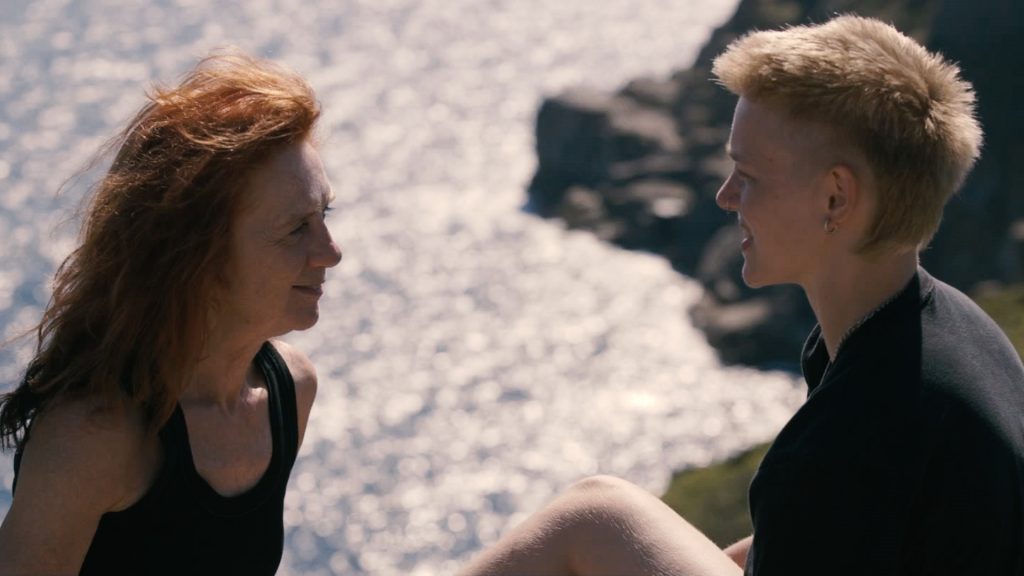
Daniela Essart and Naissa Essart-Nielsen, Emerging R&D ain Cornwall, Summer 2020. Photos Sky Neal
Emerging is co-created by Daniela Essart (artistic director & performer) and Naissa Essart-Nielsen (collaborator & performer) for Scarabeus Aerial Theatre.
For more on the company, and updates on the progress of Emerging, see www.scarabeus.co.uk
Emerging is due to premiere autumn 2022, and is commissioned by the Lowry and supported by Jacksons Lane
The Emerging film teaser was funded by Arts Council England and Paul Hamlyn Emergency Funds. Shot and directed by Sky Neal, with additional footage by Mark Morreau. See: https://vimeo.com/485166726
The Emerging R&D in April 2021 at National Centre for Circus Arts was funded by Arts Council England.

